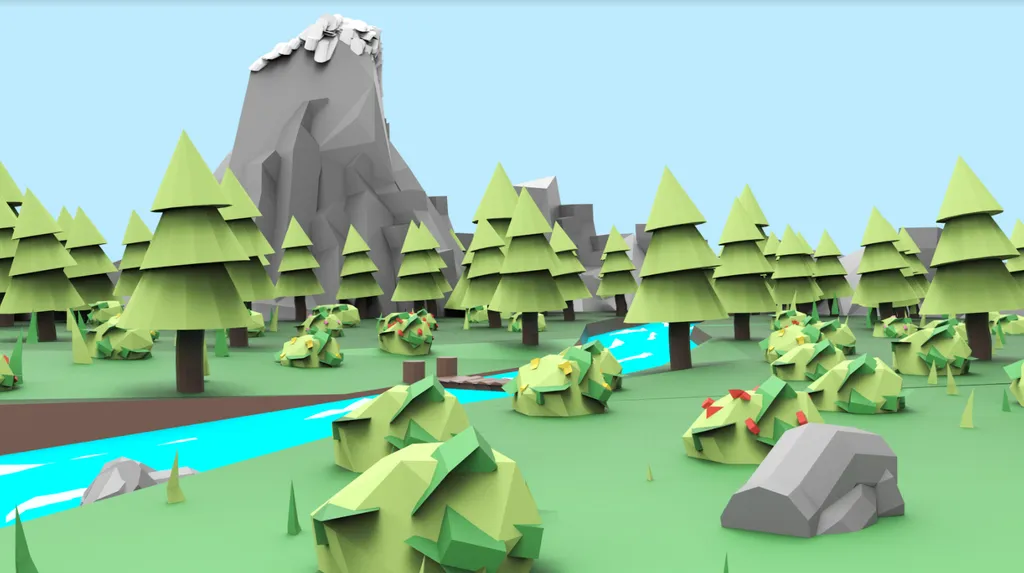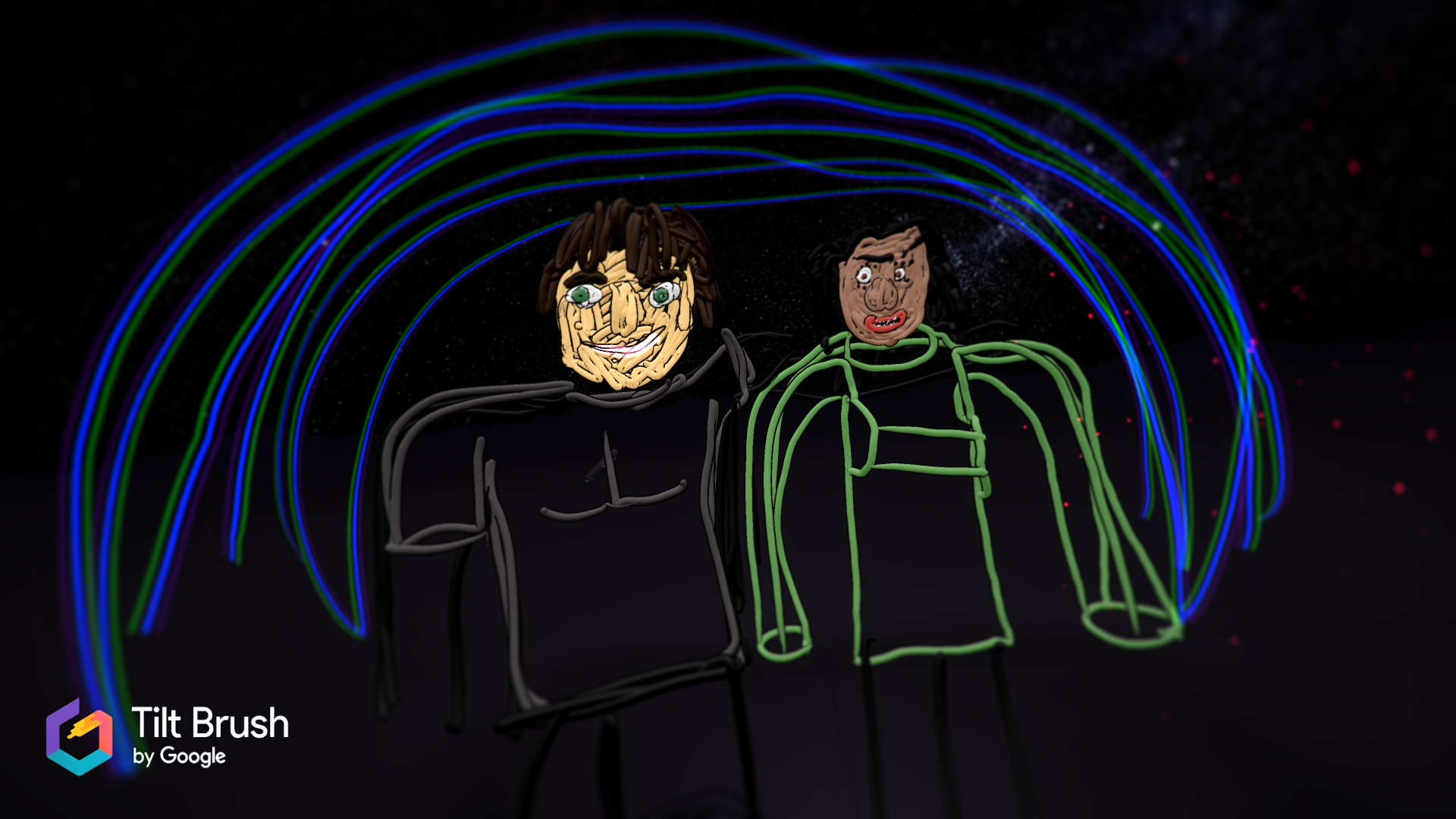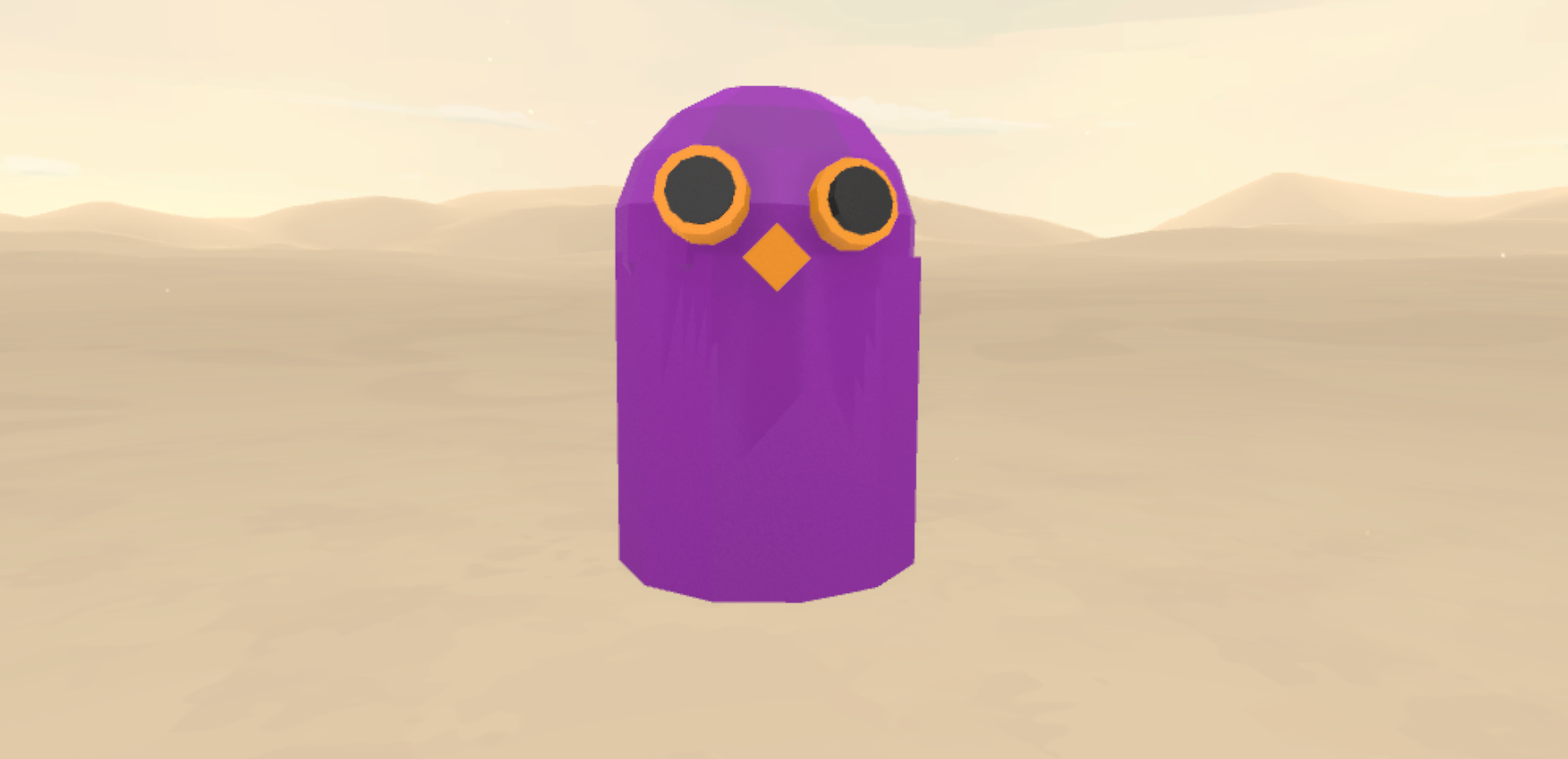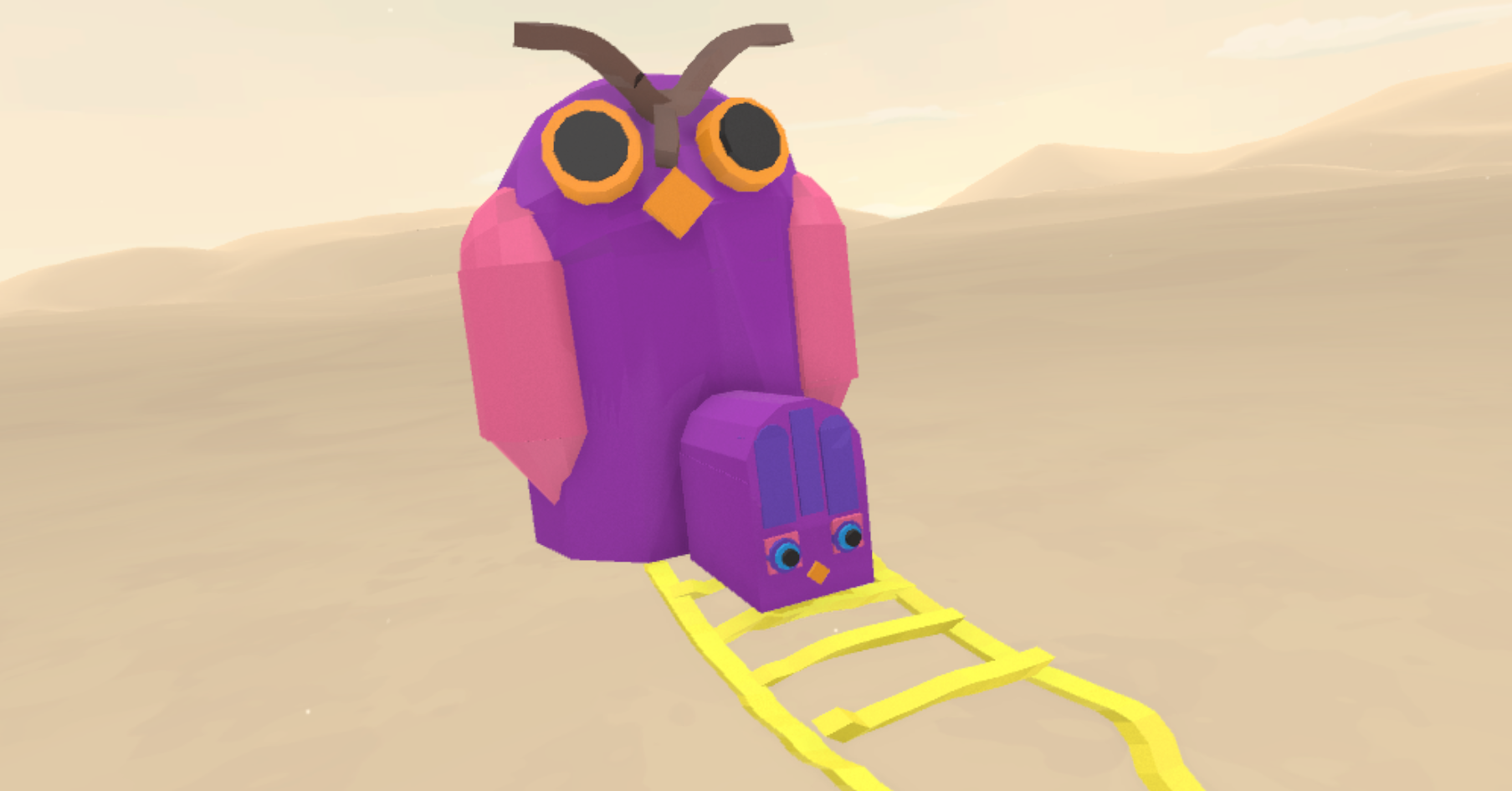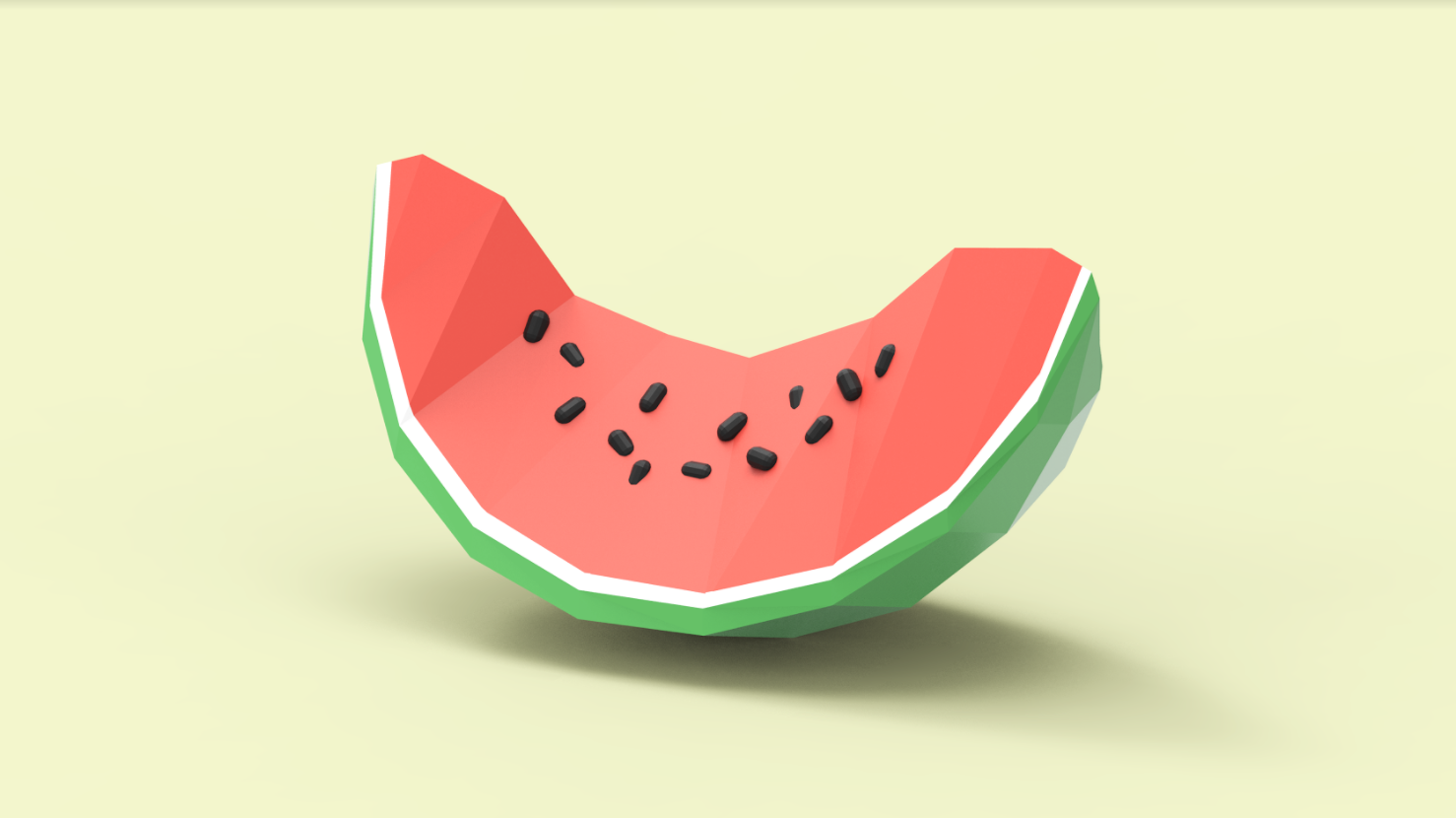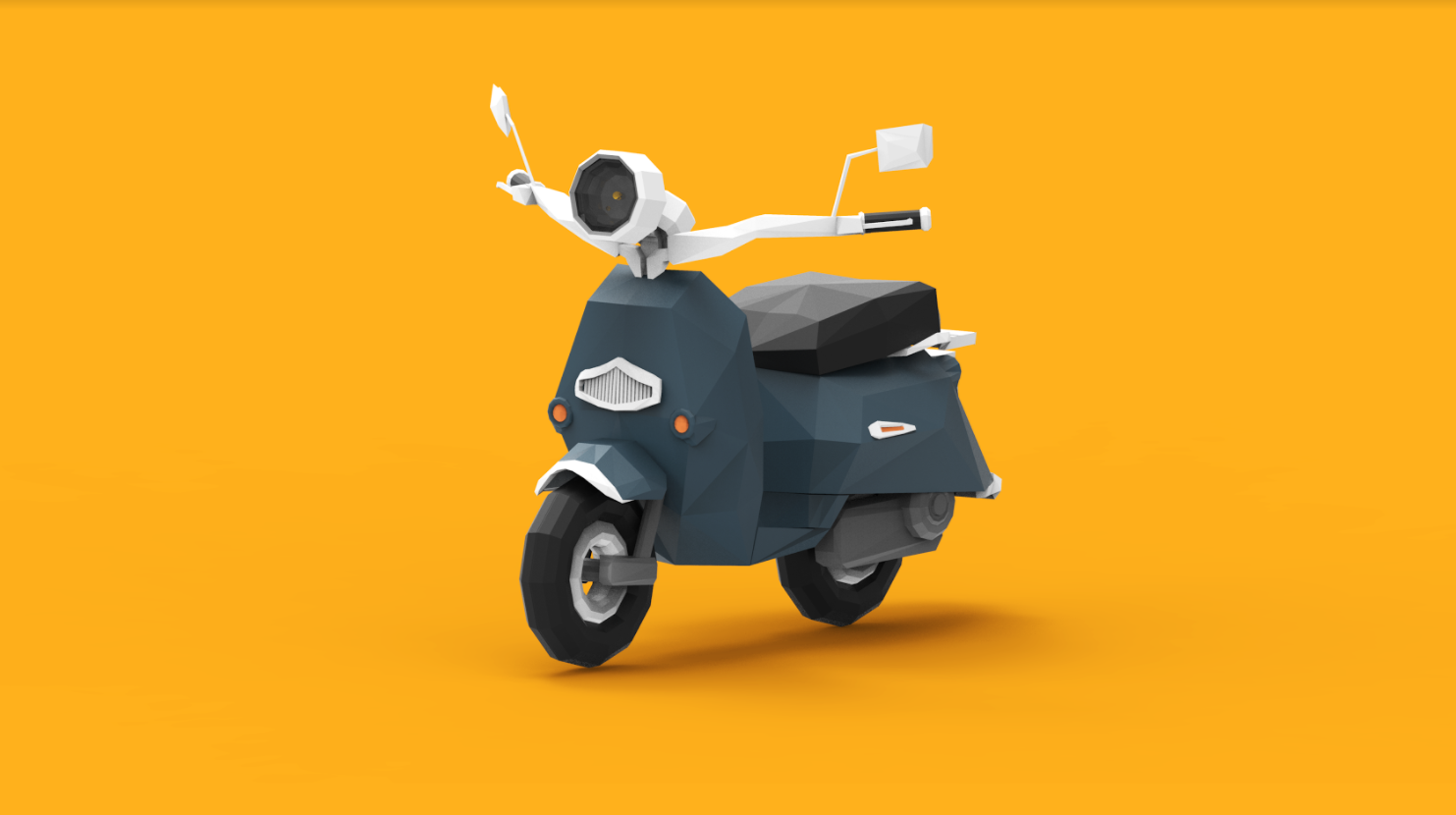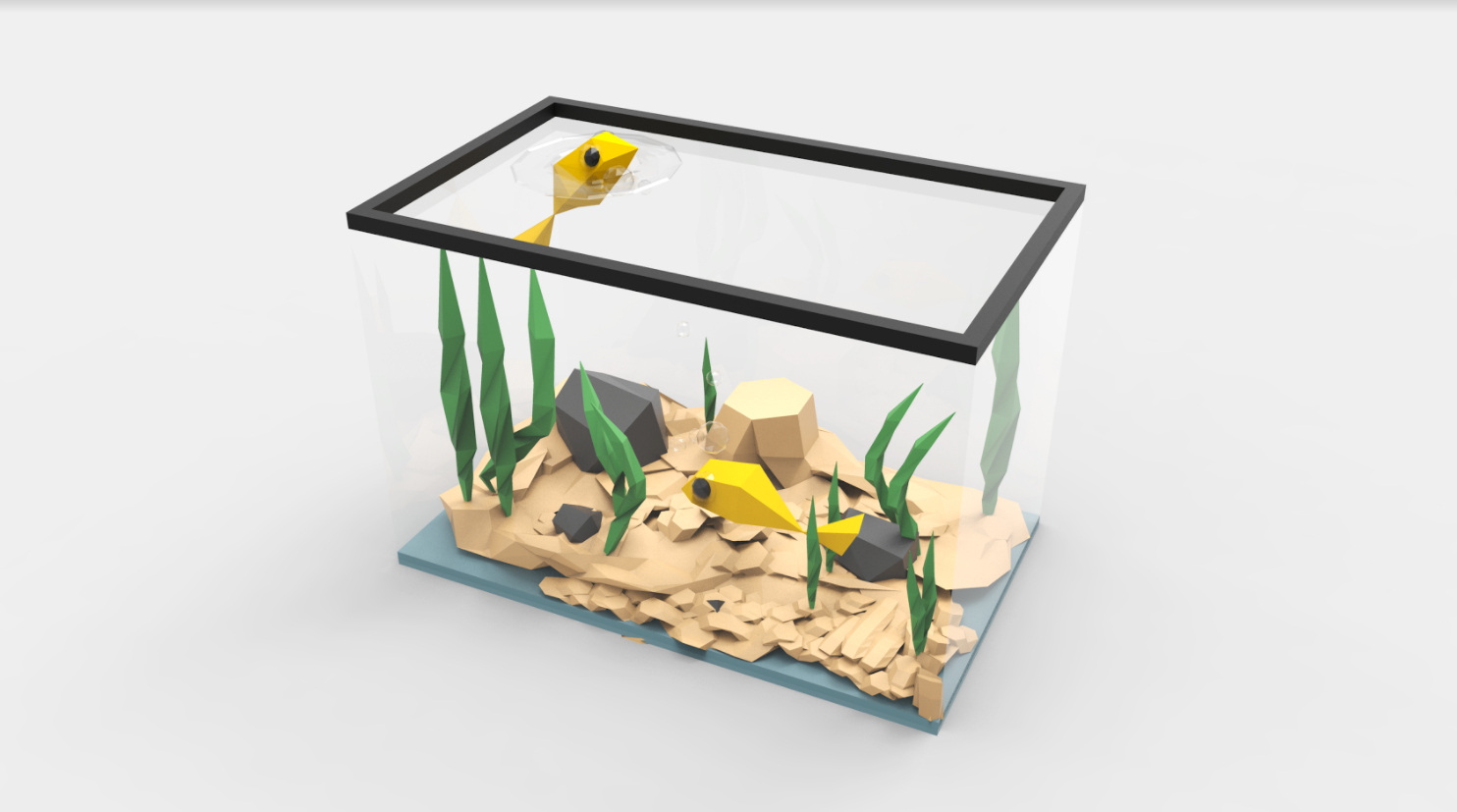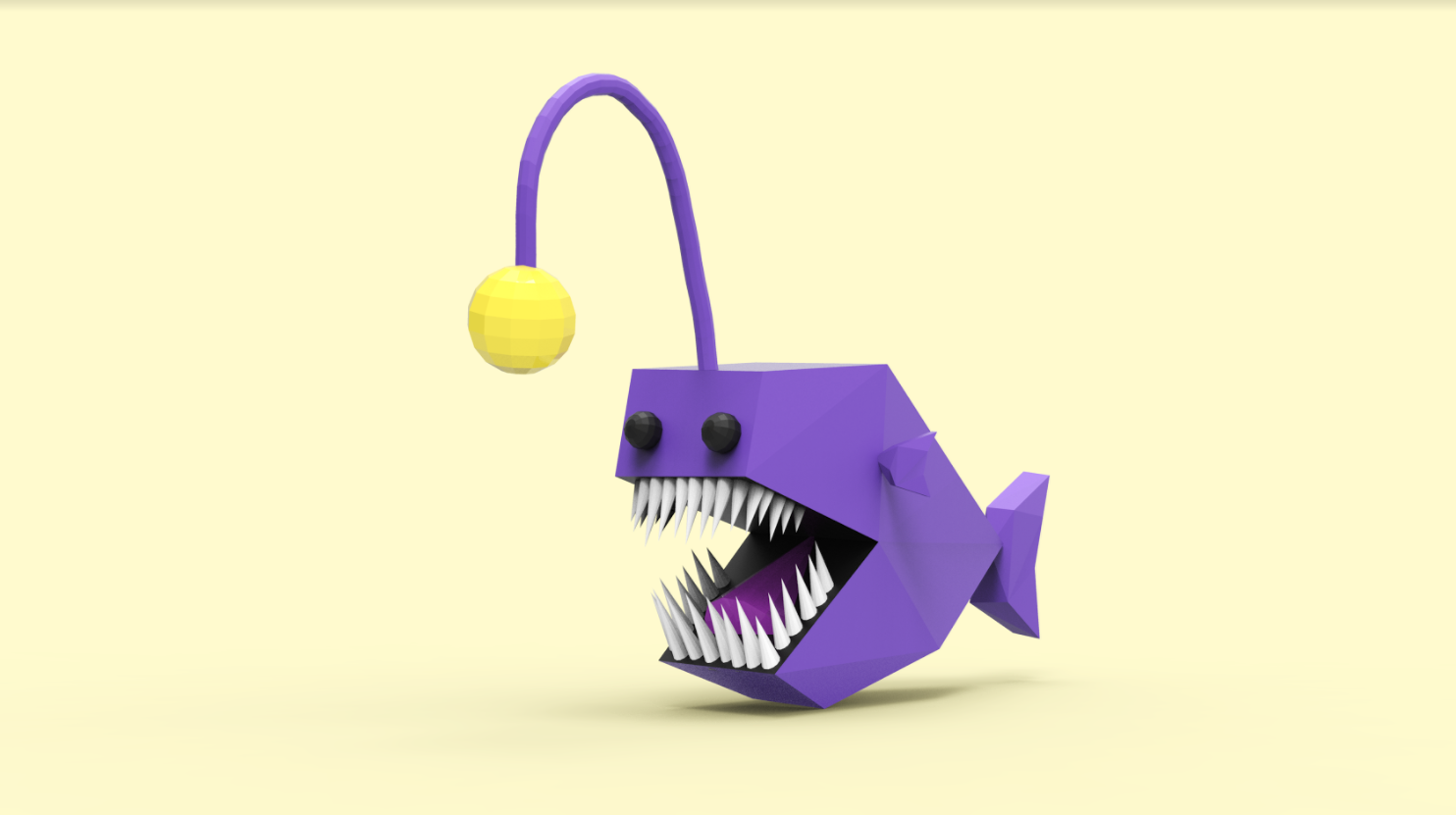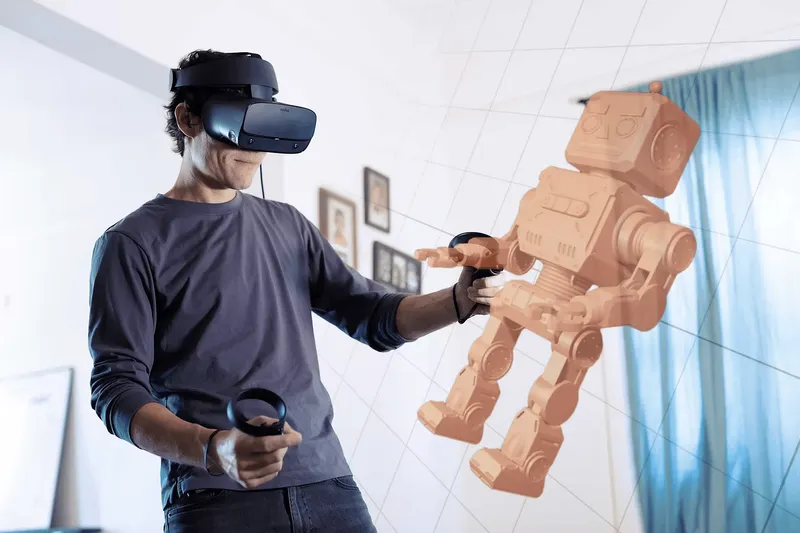I’ve only ever “successfully” made one thing inside Tilt Brush. It was a painting of me and my girlfriend. Want to see a picture of it? Are you sure? Okay, then. Apologies in advance for any nightmares it may give you.
As you may have guessed, I do not consider myself an artistically gifted person. It’s with a great deal of envy, then, that I look upon the magnificent work artists like Elizabeth Edwards churn out on a daily basis in apps like Tilt Brush, Quill and Medium. I write our weekly round up of Sketchfab Favs through gritted teeth, wishing I possessed just an iota of the talent on display. I suspect I’m not alone in my jealousy; I think every VR owner would be making cool 3D models if there was just an app that let them find their feet.
Google wants Blocks to be that app.
The search engine giant sees its latest VR effort — available starting today for free on Rift and Vive — as the creative app for everyone by literally giving you the building blocks to get started with 3D content creation. In Tilt Brush, you’d hold down the trigger on your respective motion controller and wave your hand in the air to draw a line. It’s a brilliantly intuitive invention, but it requires the hands of an artist for mastery. With Blocks, you can place and then edit basic shapes to make 3D models with far greater ease.
Blocks’ tutorial lasts about 2 minutes and it teaches you how to make an ice cream cone. It’s as simple as accessing a menu, selecting a cone shape and then placing several sphere shapes on top of it, resizing each successive piece and then placing it inside of the existing model to achieve the desired look. It doesn’t cover all of the app’s various tools, but it tells you all you need to know to start making something simple.
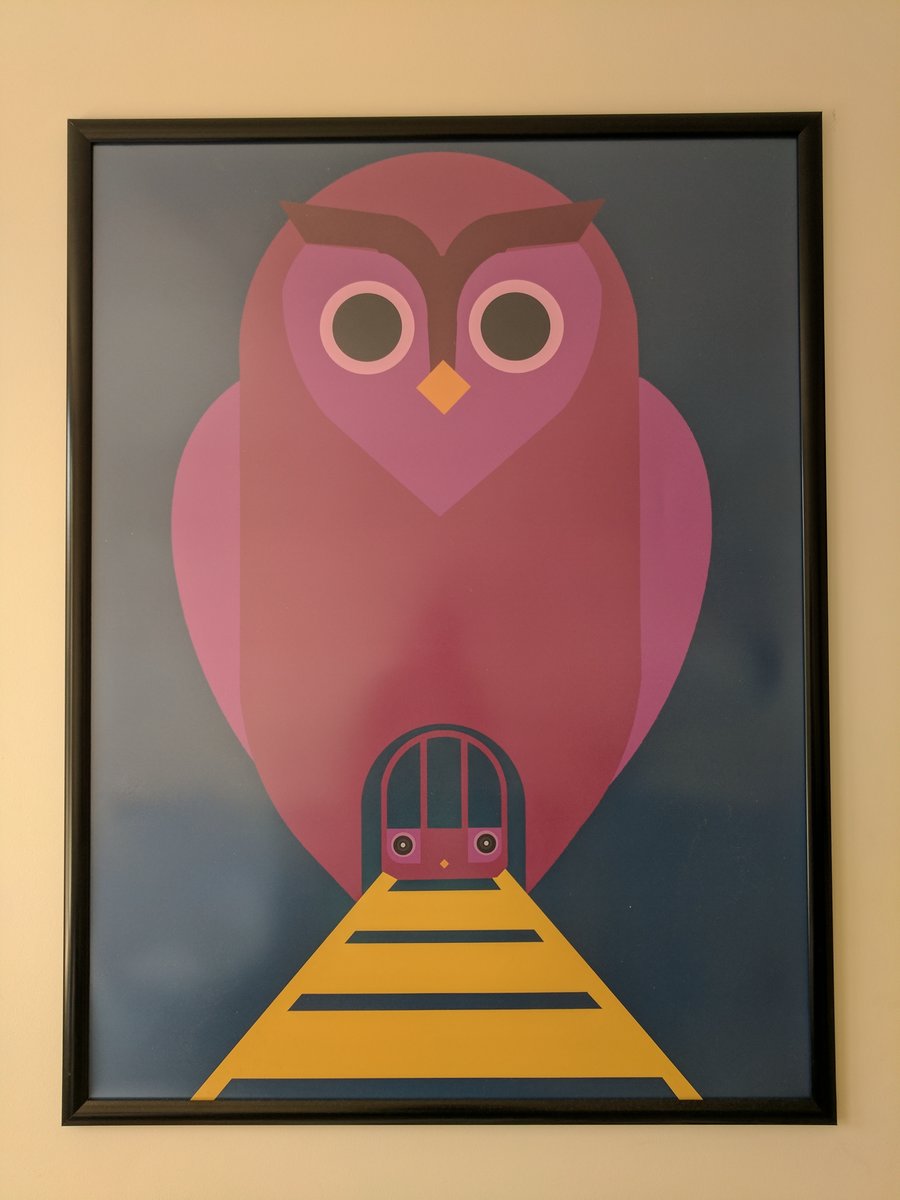 For my first creation I knew I needed something approachable and realistically achievable for a man without the slightest hint of artistic integrity, so I chose to recreate a poster in my room that you can see off to the side. It’s an advert for the Night Tube service on the London Underground that I’m particularly fond of. It seemed perfect for a first attempt at Blocks with its bold, defined form and vibrant colors that don’t differ in share or complexity. Not to mention that it looks really cool, too. All I’d have to do is picture a 3D form of the flat image and bring it to life right in front of me.
For my first creation I knew I needed something approachable and realistically achievable for a man without the slightest hint of artistic integrity, so I chose to recreate a poster in my room that you can see off to the side. It’s an advert for the Night Tube service on the London Underground that I’m particularly fond of. It seemed perfect for a first attempt at Blocks with its bold, defined form and vibrant colors that don’t differ in share or complexity. Not to mention that it looks really cool, too. All I’d have to do is picture a 3D form of the flat image and bring it to life right in front of me.
Remaking this image in VR with results that I was (relatively) happy with was brilliantly simple. I used a cylinder to form the body, then planted a sphere half-way at the top for the head. With smaller cylinders for eyes and a cube for the nose, I had the very base of my model in less than five minutes. I added in a touch of color with a palette that’s far more simplified than Tilt Brush’s expansive scale and got pretty close to the real thing.
All the tools I expected to feature were ready and waiting. I cloned one eye to make sure they matched, and I could swipe through objects with a grab tool to move multiple pieces at once. If I’d wanted to I could have grouped these objects together so they were stuck in place. As you can see in the image above I didn’t quite get the center of the head right, but a grid mode allowed me to be far more attentive and accurate with its placement.
Blocks also has a Tilt Brush-esque paint brush tool that enabled me to draw lines in mid-air. As you can see in my finished model, I wasn’t very straight with these lines, but it’s possible to click once in one space, move your hand to another space and then click again and the tool will automatically draw a straight line for you. When I was done, I published my model to Google’s new online hub for all the world to see and other people can even take my model and edit it, should I allow them to do so.
As an introductory experience, I was hugely encouraged by how simple and stress-free all of this was.
It goes deeper, of course, on the understanding that users will continue to dig as they become more accustomed with the tools. Playing around with the menu, I found an option to edit the shapes themselves, clicking then dragging on corners to push and pull them into more complex forms. This isn’t something that more established VR artists are going to ignore; if you don’t believe me, check out some of the awesome models made by community below that really show what you can make with this thing.
Outside of the app itself, I was able to quickly import my model into Tilt Brush so I could add finer details as I saw fit. You might notice my final model doesn’t have some of the patterns you see on the owl, but I could have made these in Google’s other art app.
That begs the question, though, why isn’t Blocks simply an extension of Tilt Brush rather and an entirely different app?
“That was definitely a consideration,” Group Product Manager Jason Toff tells me. “The way we think about it is like Lego blocks and crayons. You could try and make a combined thing, you probably could, but it would be a worse crayon and a worse Lego block. We thought it would be better off to have seperate tools.”
The differences in UI and art style certainly set Blocks apart from Tilt Brush. Personally, I like to think of Blocks as VR’s very own LittleBigPlanet; an app that gives you a simple set of tools to get started with user-generated content, but encourages you to later push on and create bigger and better things.
Blocks’ future might be much bigger than simple sculpturing, though. Content creation in VR is increasingly being led down an unexpected but welcome avenue, doubling as an asset creation tool for games and other 3D experiences. It’s something Toff describes as a “happy accident”. Vive sword fighter Paulo’s Wing was built with assets made entirely in Tilt Brush, for example, and Unity’s new Editor VR gathers tools from other developers and places them inside one versatile platform that allows anyone to make something that could then be seen and used inside any game, not just VR. Toff wouldn’t say whether or not Blocks might one day join Editor VR’s list of tools, but he’s very much on the side of democratizing game development.
“I will comment that I personally and many people are super excited about any efforts that make it easier for people to create more art for their app,” he said. “Without it we’ll just continue to have a handful of game devs who happen to be good at this.”
It strikes me that with Google’s entire line-up of creative apps that any VR owner might one day have the tools needed to build entire game worlds from scratch with the wave of a hand. Blocks is just another weapon in that growing arsenal. “Would you want that?” Toff asks when I suggest this possible future.
“Absolutely,” I reply.
“Then maybe we will.”

